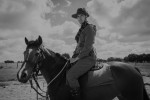Search
Using the filters to the left, click your selection, it will become bold and filter the results, click it again to remove that filter.
During the latter months of 2019 and the new year of 2020, Australia experienced catastrophic and widespread bushfires. As the situation worsened, the federal government unexpectedly called out the Australian Defence Force (ADF) Reserves to bolster an already significant deployment of ADF regular forces to contribute to a massive interagency and volunteer community response. This deployment was the largest ever peacetime domestic ADF operation in response to a natural disaster. The ADF responding to …
Over the past 100 years, the manner in which the infantry battalion is employed has undergone revolutionary change— something that is not always appreciated by those who regard the infantry as the unskilled labour force of the battlefield. In fact, nothing could be further from the truth. This paper discusses the implications of the transition from relatively unskilled mass industrial-age infantry to the information-age specialists who dominate the modern battlespace. Oddly, these changes have not been …
In an era of increasing focus upon concepts such as hybrid warfare, insurgency and ‘low intensity conflict', asymmetry is often seen as a means employed by conventionally weak actors against traditional military powers. This presumption is challenged by the author in this paper. Unfortunately, most of the ADF's future operating concepts inadvertently give ground to Australia's enemies by—almost exclusively—addressing asymmetric warfare as a style of fighting in the unique realm of people who will do harm …
In this paper, Brigadier Field examines the role of the 9th Australian Division in Operation Cartwheel which involved the capture of the Japanese Base at Lae. He uses this division’s expeditionary operations and amphibious manoeuvre as the basis for analysis of the seven tenets of manoeuvre described in current Land Warfare Doctrine. The result highlights the challenges inherent to expeditionary operations and amphibious manoeuvre in Australia’s primary operating environment. Brigadier Field also offers …
Periodically the US military is host to a robust, heated, and sometimes painful debate on the future character of war. By contrast, the most striking thing about debate within the Australian Army is its near total absence. The Army, it appears, is unable or unwilling to debate openly about either its own future or the future of war. For an organisation that prides itself on its professionalism, this is a damning conclusion. This LWSC Working Paper asks the question why this the case? In doing so, it …
This paper examines the role of the Australian Army in a maritime concept of strategy. It does so against the background of new trends in post-Cold War international security and, in light of the publication in 1997 of Australia's Strategic Policy (ASP 97) and Restructuring the Australian Army (RTA). It argues that ASP 97 and the 1997 RTA plan are not optimising the Army's capabilities, force structure and doctrine for tasks which a close reading of the strategic guidance contained in ASP 97 might …
This paper analyses the relevance of deterrence theory based on conventional forces to Australian military strategy. It argues that a majority of Australian strategists did not favour conventional deterrence as an explicit strategic posture during the Cold War since it was seen as an outcome, rather than a starting point, of successful defence planning. In the post-Cold War era, conventional deterrence has become a disputed subject amongst Western defence analysts. In a multipolar world prone to regional …
This study examines the relationship between the 1915 Gallipoli campaign and the military revolution of World War I. The paper seeks to focus on what can be learnt from the military expedition rather than concentrating on its legendary aspects. The study evaluates the strategic concept behind Gallipoli, provides a sketch of the events of the campaign, and then analyses the context and enduring significance of the Allied attempt to seize the Dardanelles. It suggests that Gallipoli remains a cautionary tale …
This paper examines the place of the Army in the making of Australian strategy in the 20th century. It argues that, over the past one hundred years, Australian peacetime strategic planning has been characterised by a schism between the requirements of local territorial defence and the needs of security defined on the basis of upholding vital international and overseas interests. The major consequence of this schism in Australian defence philosophy was that, for long periods during the past century, the …
This paper examines the way in which Australia has responded to the post–Cold War concept of a Revolution in Military Affairs (RMA). It argues that, between 1994 and the present, Australian thinking about an information-age military revolution has gone through two distinct phases: a period of informal debate and a period of institutional theorising. The informal phase of Australian RMA thinking lasted from 1994 until 1997 and represented a period of intellectual speculation under the rubric of Defence of …


